Athens Less Than 48 Hours Challenge
Introduction
Spend 48 hours in Athens, and you can experience some truly fascinating history, ancient architecture and archaeology, spectacular views, and magical, scented pine woods. Or you can dine out in style, shop for the latest contemporary design, see cutting-edge art exhibits, and dance the night away at a techno rave. You don’t have to choose. In this lively, sophisticated Mediterranean city, ancient and modern coexist, happily inseparable. People-watch in a café and you’ll recognize the faces of the statues and frescoes in Athens’ museums; in the markets and bars, you’ll overhear the lively discussions that might once have rung out across the ancient agora. They say you’ll discover archaeology if you dig a hole anywhere in Athens. There, in large glass-fronted mini museums or embedded in the walls, are all the ancient artifacts found at that location.
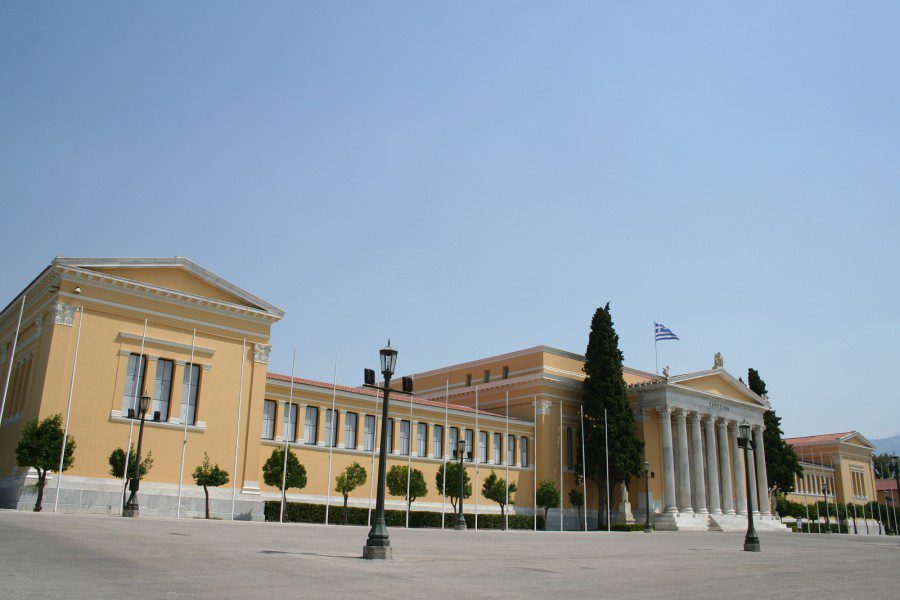
Best Tour Packages for Athens
- Athens City-breaks | 4 Days starting from 560€
- Greece Mainland Tour | 8 Days starting from 1.495€
- Best of Greece | 11 Days starting from 2.050€
Before You Start
Athens can be hot and dry during the famous June to September vacation season. You’ll need these absolute essentials to stay comfortable:
- Good – and excellent – walking shoes
- A map of central Athens or a reliable GPS device
- A sun hat
- High-factor sun lotion
- A bottle of water
- Read also the best time to visit the Athens article
Let’s start our challenge
Day 1
12 noon: Ease yourself into Athens rhythms with a traditional lunch on the terrace of Gods Restaurant, just across from the Acropolis Museum. This family-owned restaurant is in a prime location on pedestrian Makriyianni Street. It may be on the tourist trail, but it has loads of fans — including the locals — and puts you in the perfect spot for the rest of the afternoon without worrying about travel arrangements. They set out their daily specials in glass cases, but if you’ve just arrived in Greece, steer clear of the food on display and go for freshly grilled fish, souvlaki, gyro or kebab, and a Greek salad.

1:30 p.m.: Watch an artisan craftsman shape 24K gold into classically inspired jewelry, using methods that have changed very little in millennia, at the Ilias Lalaounis Jewelry Museum. Lalaounis, who died in 2013, was an internationally acclaimed goldsmith and sculptor in precious metals. He was to Athens what Tiffany was to New York, Cartier to Paris, Bulgari to Rome. Inspired by ancient art and historic finds, his work was worn by celebrities, presented to kings, and even appeared in films (Most Famous Movies Filmed in Greece). The museum, housed in his former workshop, is now run as a non-profit cultural and education institution. Its exhibits include 3,000 items from 50 collections and temporary exhibitions from all over the world. There’s a model workshop on the ground floor where a jeweler makes small items and demonstrates ancient techniques.

3:15 p.m.: When workers began to excavate the foundations of the Acropolis Museum, they discovered an unknown Byzantine street and a complete street of domestic houses from the classical period. Rather than excavate the archaeology and then bury the ancient site in the foundations of the new building, they designed the museum to float above it on pillars. After entering across the excavations on a flying bridge, visitors may be slightly unnerved to find themselves on a glass “ground floor,” looking down on the ancient street. The museum was built to house everything excavated on the Acropolis Hill and the cult caves on its slopes. Its arrangement over three floors matches the march of history from the prehistoric period to the Romans. The Parthenon, atop the Acropolis Hill, looks down on the Parthenon Gallery, built to house the marbles from its frieze. The only replicas in the museum are here, emphasizing that the real marbles, also known as the Elgin Marbles, are not here but in the British Museum in London.
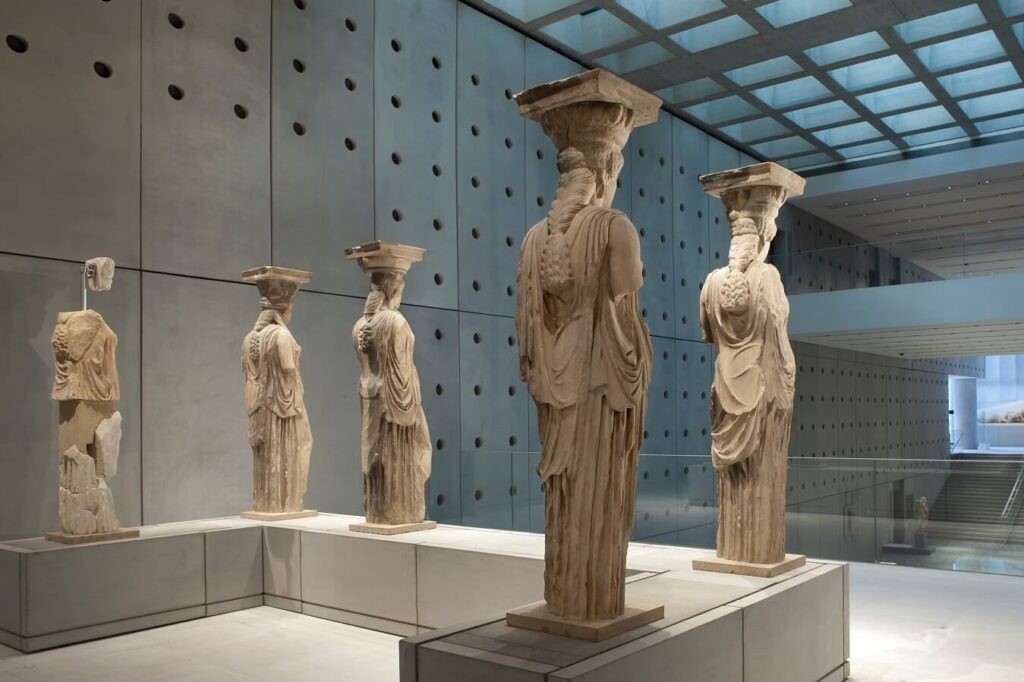
6 p.m.: Have a wander in Plaka. Sooner or later, most visitors head there only to be disappointed by how touristy it is, with its seemingly endless souvenir shops all selling the same things. However, finding the treasures in Athens’s oldest continuously inhabited area is worth a little effort. Plaka wraps around the base of the Acropolis on the north and east sides, a maze of narrow streets lined with wooden houses. Look for the photo opportunities of pastel-colored houses draped in bougainvillea, interesting Greek design shops like Forget Me Not at 100 Adrianou, and casual tavernas in shady squares. Most of the shops in Plaka stay open until at least 8 pm — some to 10 pm — so you have plenty of time to explore. Take a break at one for a cappuccino freddo, a cold cappuccino topped with frothy cold milk, or a frappé, an old-fashioned Athenian favorite made with instant coffee, ice, and condensed milk.
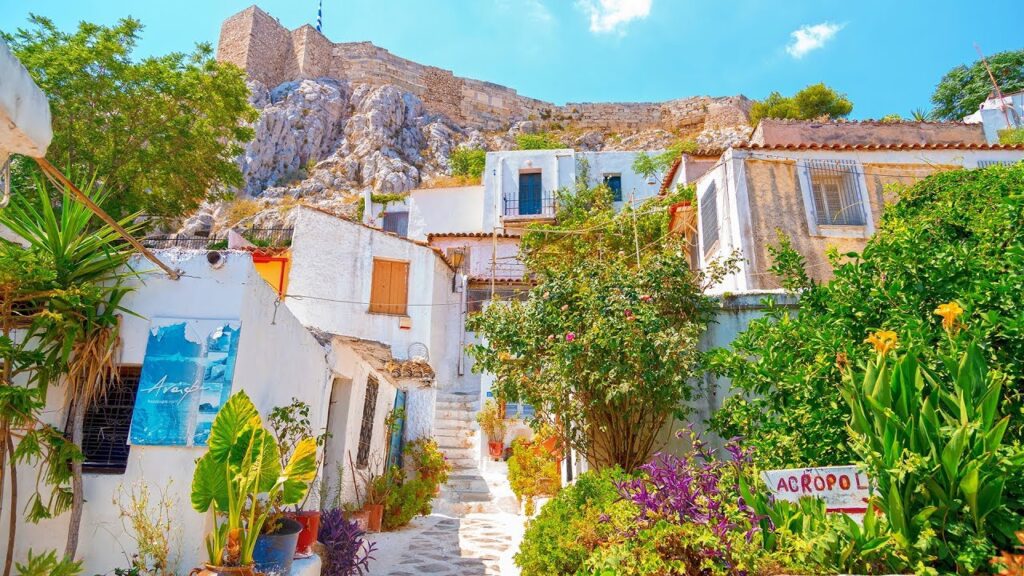
Once you’re refreshed, hunt for Anafiotika, a magical “island” neighborhood hidden against the slopes of the Acropolis. It was created in the 19th century by settlers from the island of Anafi, and once you’ve found it, you will believe you’ve been transported to an island in the Cyclades. Its boxy little, whitewashed houses, with blue painted shutters and pots of geraniums, are arranged along narrow lanes that end abruptly and staircases that lead nowhere, spreading up the northeast corner of the Acropolis. To find it, head up Erechtheos Street toward Britannia Street, turn right across from the church called Metochi Panagio Tafou, and look for ways to go uphill. You’ll see lots of signs for dead ends and cul-de-sacs that look like private roads, as well as twisting staircases that look private. They aren’t. These are the lanes and streets of Anafiotika. Explore and enjoy the views.
7:30 p.m.: Time for drinks and dinner. If you’ve been exploring Anafiotika, you should be close to one of the Plaka’s best and most picturesque tavernas, Psaras, at Erotokritou and Erechtheos streets. The restaurant has a vast menu that’s strong on traditional dishes — dolmades, lamb kleftiko — but also great for vegetarians and seafood lovers. It’s popular, so it’s worth booking online ahead of time. Request an outside table — they are arranged on wide, flower-decorated stone steps that lead up through the district.

Day 2
8-8:30 a.m.: Visiting the Acropolis is a must if you are in Athens for the first or the fifteenth time. Start early to avoid the biggest crowds and the day’s heat. Wear sturdy shoes and carry at least two bottles of water — once you enter the World Heritage sites, there won’t be any place to get a drink before lunch. There’s a lot to see. Start your visit with a leisurely climb up the Dionyssiou Areopagitou. This wide pedestrian avenue winds through the pine woods and the archaeological sites of the south slope of Acropolis Hill. Before entering the sacred precinct, stop first to visit the Ancient Theatre of Dionysus. This is the oldest surviving theater in the world. Built in the 5th century B.C., it was here, before an audience of 17,000, that the plays of Aeschylus, Aristophanes, Euripides, and Sophocles were first performed. About 20 rows of the original 60 rows of seats and the original diamond mosaic on the stage floor remain. The site opens at 8:30 am. You can buy a multi-day ticket for all the monuments on the Acropolis, the Ancient Agora, and several other archaeological sites and museums at the ticket office here.
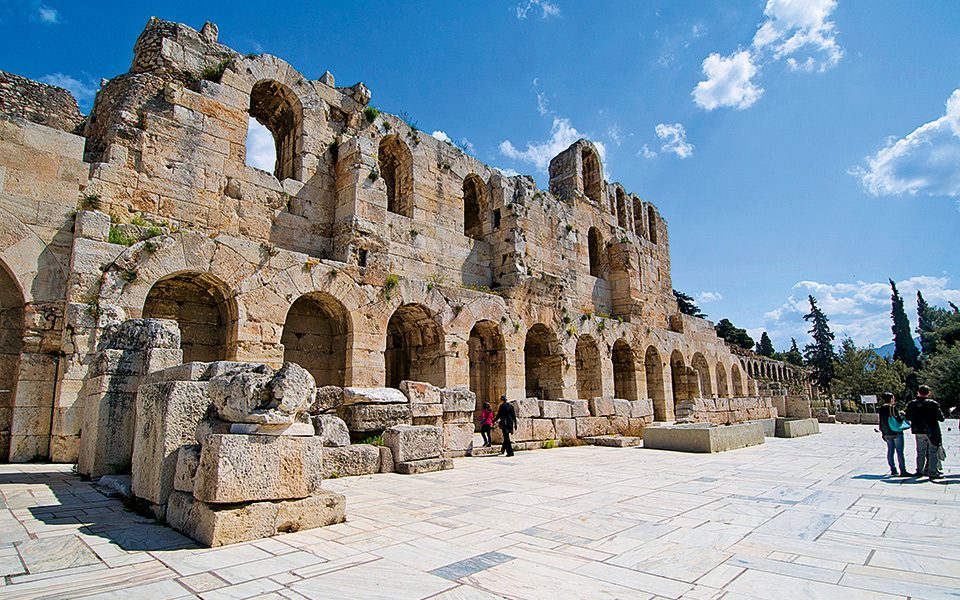
9:15 a.m.: Continue upwards and westward toward the sacred precinct’s entrance on top of the Acropolis. It’s a comprehensive set of worn marble stairs through a gateway known as the Propylaia. It doesn’t matter how many pictures of the Parthenon you’ve seen in books, brochures, and postcards — when you walk through those gates and see it for the first time, it looks, at once, exactly as you expected and so much better than you ever imagined. Give in and take the same pictures everyone else takes; it is a transcendent experience. Besides the Parthenon, there are two other significant temples on the Acropolis dedicated to different aspects of Athena and built during the Golden Age of Pericles in the 5th century BC:
- The Temple of Athena Nike (also known as Wingless Victory), built to celebrate a victory against the Persians.
- The Erechtheion, famous for the six maidens supporting its roof — the Caryatids (these are copies; five of the originals are stars of the Acropolis Museum, and the sixth is in the British Museum). This was built on the holiest site on the Acropolis. It was here that Athena planted an olive tree, her sacred symbol. According to legend, Persian invaders destroyed the tree; it miraculously sprouted again when they were expelled.

Before you leave the sacred rock, take some time to enjoy the 360-degree views of Athens, its thousands of whitewashed houses splashing like seafoam over the landscape and its steep hills.
10 a.m.: Leave the Acropolis as you entered and turn right in front of the leading ticket kiosk, continuing downhill on the eastern slope into the Ancient Agora of Athens. There are restrooms near the main ticket kiosk, and now would probably be an excellent time to take advantage of them. The gift shop near the kiosk has some excellent merchandise inspired by artifacts excavated from the site. On the way down, the rocky hill ending in a steep ledge to your left is Areopagus Hill, the site of the world’s oldest law courts. It’s mentioned in the Greek tragedy, the Oresteia, as the place where Orestes was tried for the murder of his mother and her lover. The Apostle Paul addressed the Athenians in 51 AD, and a bronze plaque at the bottom of the hill commemorates his sermons.
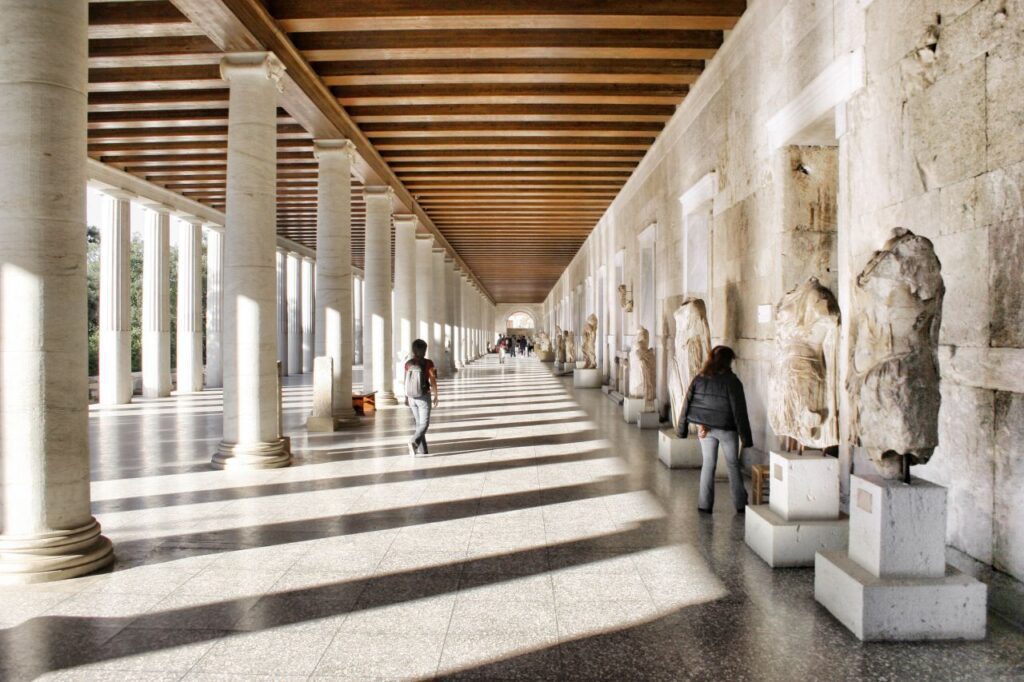
The Ancient Agora is a quiet, green space overlooked by the Temple of Hephaistos, said to be the best-preserved temple of ancient Greece. Several lovely shaded paths are down through the agora from the temple to the Stoa of Attalos. With its columned portico and tile roof, this two-story building was an antique shopping mall, circa 159-138BC, with 21 shops on each floor. The American School of Classical Studies at Athens reconstructed the building from existing ruins in the 1950s. The small museum inside has materials excavated in the Agora, including ostraca, the inscribed clay potsherds used to vote in the world’s first democracy.
12 noon: By now, you must be ready for a break and a quick drink. Leave the Ancient Agora onto Adrianou Street, near the Stoa of Attalos. You’re now in Monastiraki, near Athens’s most colorful market. The street is lined with tavernas, any one of which can supply you with a quick refreshment.

12:30 p.m.: Make your way to Avissinias Square. It’s the center of Monastiraki’s antiques market. You’ll find it between Ermou and Adrianou Streets, between Agiou Filippou’s and Platia Avissinias’s intersections. There’s excellent browsing for traditional furniture and European bric-a-brac. It’s also the location of an excellent place for lunch — Café Avissinias. It’s a restaurant with a bohemian vibe, furnished with antiques, mismatched tiles, and dark wood. The food is Greek, specializing in mezes with Asian and Balkan influences. It’s tiny and popular, so book ahead.
2 p.m.: Shop ’til you drop or browse to your heart’s content in the seemingly endless warren of interconnecting lanes and paths that make up Monastiraki Market, the Athens flea market. Here, you can buy clothes, food, sweets and baked goods, beads and jewelry, antiques, furniture, ceramics, souvenirs, musical instruments, handmade sandals, textiles, candles, soaps — almost everything imaginable. The market’s shops, stalls, and stands are sheltered beneath awnings that reach across the narrow lanes, nearly touching in the middle. Their goods pour out onto the streets. Tourists and Athenians mingle equally here; you never know what you will find. Even if you hate shopping, the people-watching and photo opportunities are superb.

5 p.m.: Now, do as the Greeks do, and get ready for a late night with an afternoon/early evening siesta.
7:30 p.m.: The evening starts with drinks and mezes to stave off hunger pangs while you watch the sunset from a rooftop bar. You could choose traditional Greek spirits such as sweet, resin flavored mastika; ouzo, flavored with anise; or tsipouro, a strong brandy. But why not save the strong drinks for later. Cocktails have recently become fashionable in Athens, and there are some great rooftop bars where the views of the city at night are splendid. Drinks at the GB Roof Garden Bar, on the 8th floor of the swish Hotel Grande Bretagne in Syntagma Square, may be on the pricey side, but to see the Acropolis light up as the sun sinks behind it is worth paying a little more for a drink. From the Galaxy Bar on the 13th floor of the Athens Hilton, you can enjoy a view that takes in Lycabettus Hill and the Acropolis and stretches all the way to the port of Piraeus.
9 p.m.: Gazi is Athens’s hip new arts and nightlife district. It was once Athens’s gasworks, complete with industrial storage tanks, gasholders, pipework, lights, and towers. And it was the only gasworks in Europe undamaged by Nazi bombs; they had a soft spot for the Parthenon, less than a kilometer away, and wanted to spare it. (Read more on full article of Athens’ Night Life’ It was abandoned as a gasworks in the 1980s. Regeneration began in the 1990s with the creation of Technopolis City of Athens. It’s a multi-purpose, design, art, and music venue and museum that, with its abandoned gasholder and massive, red floodlit chimneys, is a focal point of the neighborhood.
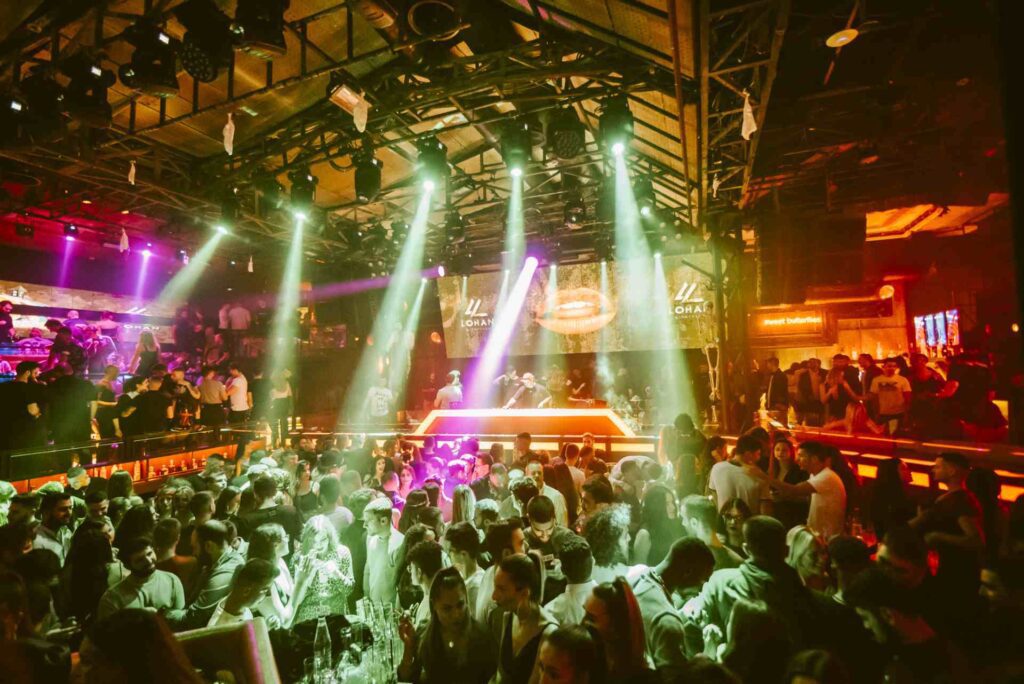
Today, Gazi is a buzzing hive of restaurants, bars, dance and live music clubs that come to life when the sun goes down and heaves with people — Athenians, tourists, old and young (though it’s not particularly family friendly). Try the streets around the main square and Kerameiko Metro Station — Iakou, Persefonis, Dekeleon, Triptolemou and Voutadon — for the best cafés and bars. The Butcher & Sardelles is actually a pair of popular restaurants, side by side and owned by the same team. One is renowned for its grilled meats, the other for fish. You can try to book, but your best bet is to get there before the main dinner crowd arrives at 10 pm. After dinner, keep the night going at the arty music café, Hoxton, with live music at Gazarte, or with a techno rave vibe at PIXI.
If a Wild Night Out is Not Your Scene… go for a dinner surrounded by the best view in Athens instead. Orizontes Lycabettus is at the top of the rocky outcrop called Lycabettus Hill. (only the church is higher). You reach it by funicular cable car. The menu is modern Greek, leaning heavily, but not exclusively, toward seafood. But the real knockout draw of this place is the view of all of Athens spreading out below it. Booking is essential, and be sure to ask for a table near the edge of the terrace.
Day 3
10:30 a.m.: Athens is so full of amazing antiquities, it’s easy to overlook the National Archaeological Museum about 10 minutes from the Viktoria Metro Station. Don’t. This is one of the great museums of the world, with collections and objects from everywhere in Greece. Suppose you’ve been to Crete, Santorini or other Greek islands with archaeological sites. In that case, you’ve probably seen little signs telling you the originals of this or that are at the archaeology museum in Athens. This is the place. The collection of 11,000 items includes some of the most important and famous finds from the ancient world including:
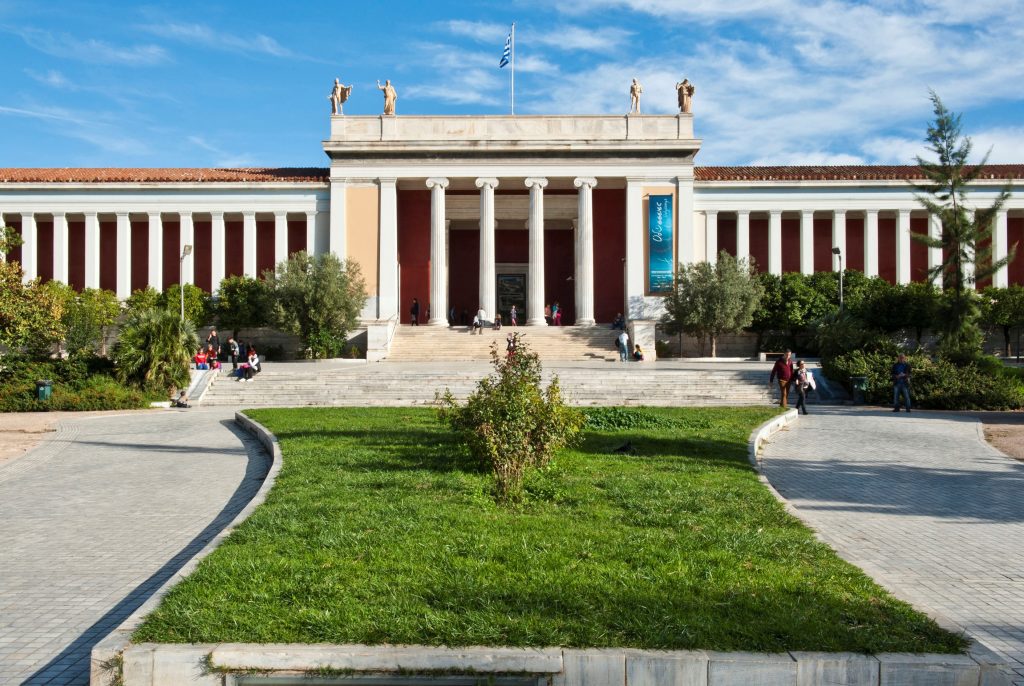
- A gold foil death mask from Mycenae. It’s called the Mask of Agamemnon after the legendary king and husband of Helen of Troy.
- Frescoes from the walls of Akrotiri, the Minoan settlement on Santorini
- Beautiful bronze statues found in the sea, including one of Zeus, poised to throw a thunderbolt
- The Artemision Jockey, a magnificent bronze statue of a young boy on a racehorse, with such a natural and emotional expression you expect him to come to life when the museum is closed for the night
- The mysterious Antikythera Mechanism (Read more on unusual attractions in Athens)
There are also vases, small metalwork objects, and objects from Egyptian and Cypriot antiquities.
11:30 a.m.: Spend some time browsing the Museum Shop. It’s stuffed with high-quality reproductions, artwork, and sculpture endorsed by the Greek Ministry of Culture, as well as less expensive books, prints, postcards, and small gift items. You can treat yourself with the money you’ve saved by not buying tacky souvenirs in Plaka.
12 noon: There are two garden cafes in the archaeology museum, one in an internal courtyard, the other in an outdoor garden. Both are of the basic sandwiches, cakes, and drinks variety. Still, sitting in the shade of palms and fig trees while statues peer out from under the greenery is very pleasant. Have a glass of wine here before heading in search of lunch. This is not a particularly inspiring neighborhood for food. Your best bet is to return to the Metro at Omonia for the 4-minute Red Line (M2) trip to Acropolis Station.
1 p.m.: The Acropolis Museum has a highly regarded indoor and open-air restaurant on the second floor where you can get a last lingering look at the Parthenon. Restaurant-goers who want to visit the museum require a free ticket from the admissions desk.










